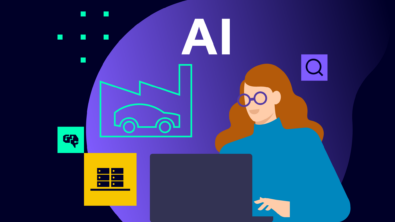Software as a service and cloud technology provide industry focused solutions to IT customers

Read a recent transcript below from our PLM Machine Builders series, with experts discussing how Software as a Service (SaaS) and the cloud via Teamcenter X provides:
- Industry-focused solutions to IT customers,
- Making PLM adoption easier, and
- Increasing preconfiguration and developing industry-focused solutions out of the box.
In the transcript below, read more details in the first podcast of the PLM Machine Builders series.
Also, check out the audio podcast.
Read the transcript
Chris: Hi, everyone, and welcome to this first session in the series on the impact of the cloud on small and medium-sized businesses. I’m your host Chris Pennington, Global Industry Marketing Leader for Industrial Machinery at Siemens Digital Industry Software.
This is the first podcast in a series of five where we’ll discuss how the cloud changes the product development process, fundamentally impacting how your business runs. Today I’m joined by my colleague Michael Boland, Senior Marketing Manager at Siemens Digital Industries Software. He’ll be helping me to understand the basics of cloud and Software as a Service or SaaS. So, Michael, would you like to introduce yourself?
Michael: Yes. Thanks, Chris. I’m happy to be here. I work on the development of industry solutions across multiple industry segments. And Chris, I’m interested to hear about your background. How did you get into this line of work focusing on industrial machinery?
Chris: I have been with Siemens for over 20 years now in a various number of roles, but before this, I held positions in product design and engineering systems management and over this time, there’d been an incredible amount of change in the way that products are developed and produced, relating to the IT and software that we use. My journey into this current role is a history lesson.
Many of the original computer systems ran as dumb terminals connected to a powerful mainframe, which was kind of a predecessor to the way cloud services are today. In the late ’70s, we saw the introduction of personal computers; through the ’80s, we saw this transforming business. I remember introducing the first PC to my department and pioneering its use.
We had one PC shared between a staff of twelve, but as the number of computers grew, we realized that having data spread around on these multiple computers could have been more productive.
And many other companies, along with us, moved to local area networks. We started to link computers and centralized data storage, and this is a model that’s been dominant for some time. Businesses have become used to high spending on computer hardware that soon becomes active. As a result of the increased spending on hardware, we have to fund IT departments to manage the infrastructure and the software.
Twenty years ago, working in engineering IT, a good CAD machine could easily cost as much as a small car, which was unsustainable.
Thankfully, prices started to come down with cheaper hardware and windows replacing Unix, but we still had fairly high costs and significant effort to maintain the systems.
So, this was around the time I joined Siemens. I remember carrying around a heavy 20-inch CRT monitor to demonstrate software. But over this time, we’ve seen the most dramatic changes taking advantage of the World Wide Web – not just to distribute information, but also to distribute computer power.
In 1999, Salesforce introduced its CRM software. The first purpose-built SAS system. So, SaaS is a lot older than you might think. And this is really where the story begins, and we can discuss the potential.
So, Mike, I’m looking forward to discussing more what Siemens is doing to simplify the IT challenges of our customers. We’ve seen cloud technology become more pervasive at home and work, which has triggered an increase in software as a service or SaaS solutions. Please briefly explain what SaaS is and how Siemens is making this technology available to its customers.
Michael: Yeah, software as a service is a way of delivering applications over the Internet. We’ve all become users of cloud solutions, often starting with our mobile phones, backing up data to iCloud or Google Drive, but also with file-sharing tools like Dropbox and more. And more recently, SaaS applications have become pervasive in our work lives, with companies like Salesforce leading the way with CRM and Microsoft moving from selling the office suite to a cloud service for document creation and storage.
Chris: And if I could interject another exciting feature, in that SaaS can run on any device, PC, laptop or even mobile phone. So, the days of needing to carry that heavy CRT monitor around are well and truly behind us.
Michael: Yes, exactly. And to build on that thought, Xcelerator offers a broad range of capabilities that take the power of cloud and SaaS further as PLM software Team Center has been available as a SaaS solution for some time under the branding of Teamcenter X. Still, we wanted to take things further and make PLM adoption even easier by increasing the level of preconfiguration and developing industry-focused solutions that we’re ready to go right out-of-the-box.
So, when it comes to PLM as a SaaS solution, Siemens recognizes its software’s critical role in managing your data. Therefore, we partner with the gold standard cloud provider, Amazon Web Services or AWS. Later in this series, we will hear directly from AWS on how they addressed large and small companies’ security and availability concerns. So, I won’t spoil that episode.
Chris: Ah, thanks, Mike. That was an excellent overview. So, as we’ve heard, cloud solutions have been with us for years.
Why is Siemens introducing tenant Teamcenter X and industry Solutions now?
Michael: Yeah. Siemens PLM tools tend to be very heavy on data. And initially, this made them a poor choice for cloud solutions. And as the speed and reliability of the Internet are improved with the introduction of 5G technology, we’ve moved to make sure we can package our solutions to take advantage of the benefits of cloud working. And there are a couple of things I’d like to point out here. Firstly, our team’s interactive product is coming up in its third year, so we are familiar with providing it.
SaaS solutions have many customers on Teams interacting with the X products we deliver, which is also not a new Teamcenter. Still, on the cloud, you can do anything with Teamcenter that you can do with Teamcenter X.
And secondly, for years before the launch of Teamcenter X, Siemens often deployed Teamcenter in the cloud, often through third-party hosts. And this means that any issues relating to cloud deployment were ironed out years ago, and this has been a steady evolution for us.
Chris: We hear about new cloud services every day. What trends do you see that are driving this conversation with customers?
Michael: The critical enabler driving broader adoption of cloud has been improvements in the infrastructure, and the introduction of faster, more reliable Internet has been vital, but also the lowering cost of cloud services which removes the need for capital investment in system maintenance. When you adopt a SaaS solution running on the cloud, there’s no need for local IT support staff, and you’ll benefit from a service level agreement or an SLA that’s likely to be much better than anything you could hope to achieve.
As we heard about in your story, an on-premise solution has a reputation for being difficult and expensive to deploy. We’ve often heard of heavy multi-year projects, and you know it takes a long time to deliver benefits. And in our modern mindsets, it’s not acceptable to us anymore, certainly not what our customers want. So what’s driving our customers to SaaS is the robust underlying technology of the most popular PLM system in the world.
Combined with the gold standard cloud delivery by a WS, the next phase of SaaS is industry solutions. These are preconfigured installations that are tailored to specific business processes.
And tailored solutions like these take even more of the pain away from configuration and deliver value immediately.
As you grow and when you’re ready, you know you can grow your system, make additional configurations, and continue increasing your investment return. But, traditionally, when PLM is implemented, there’s a consultancy phase before going live, which delays your time to value. So, industry solutions work to deploy a working system that can guide you to desired configurations as you gain more experience and its use and capabilities.
More importantly, you start to see value in weeks instead of months.
Chris: So, Michael, could you dig deeper into why companies should consider cloud and SaaS and what the benefits of that are?
Michael: There are several powerful reasons why SaaS is appealing to our customers. The first that comes to mind is that IT departments are often overstretched. Small to medium businesses don’t have the funds for a large IT department. SaaS for PLM allows you to access expert skills in deploying, maintaining, and upgrading these systems. So, it removes a considerable burden from the company. Imagine not having to think about backups, upgrades and all that daily administration that’s common with an enterprise system.
Next, I would mention the availability and performance.
In our next session, we will discuss the system running on AWS, getting the best service and performance available, which is really what you need when managing product data – the crown jewels of your organization. And finally, I want to mention scalability as a considerable benefit.
AWS can quickly add more power to the server side of your system in minutes, so there’s no need to get started in getting hardware quotes and figuring out how you’ll integrate performance upgrades.
Chris: This was a great conversation today, Michael, and a great start to the series. So, thanks again for joining me in this discussion on how SaaS versions are introducing new opportunities for small and medium-sized businesses. And thanks to our listeners for joining us. Please stay tuned for the next podcast in the series, where our partners at Amazon Web Services will join us to discuss the challenges that small and medium businesses face in adopting cloud technology for managing sensitive data.
Thanks for your time. Goodbye.
Siemens Xcelerator, the comprehensive and integrated portfolio of software and services from Siemens Digital Industries Software, helps companies of all sizes create and leverage a comprehensive digital twin that provides organizations with new insights, opportunities and levels of automation to drive innovation.
For more information on Siemens Digital Industries Software products and services, visit siemens.com/software or follow us on LinkedIn, Twitter, Facebook and Instagram. Siemens Digital Industries Software – Where today meets tomorrow.


